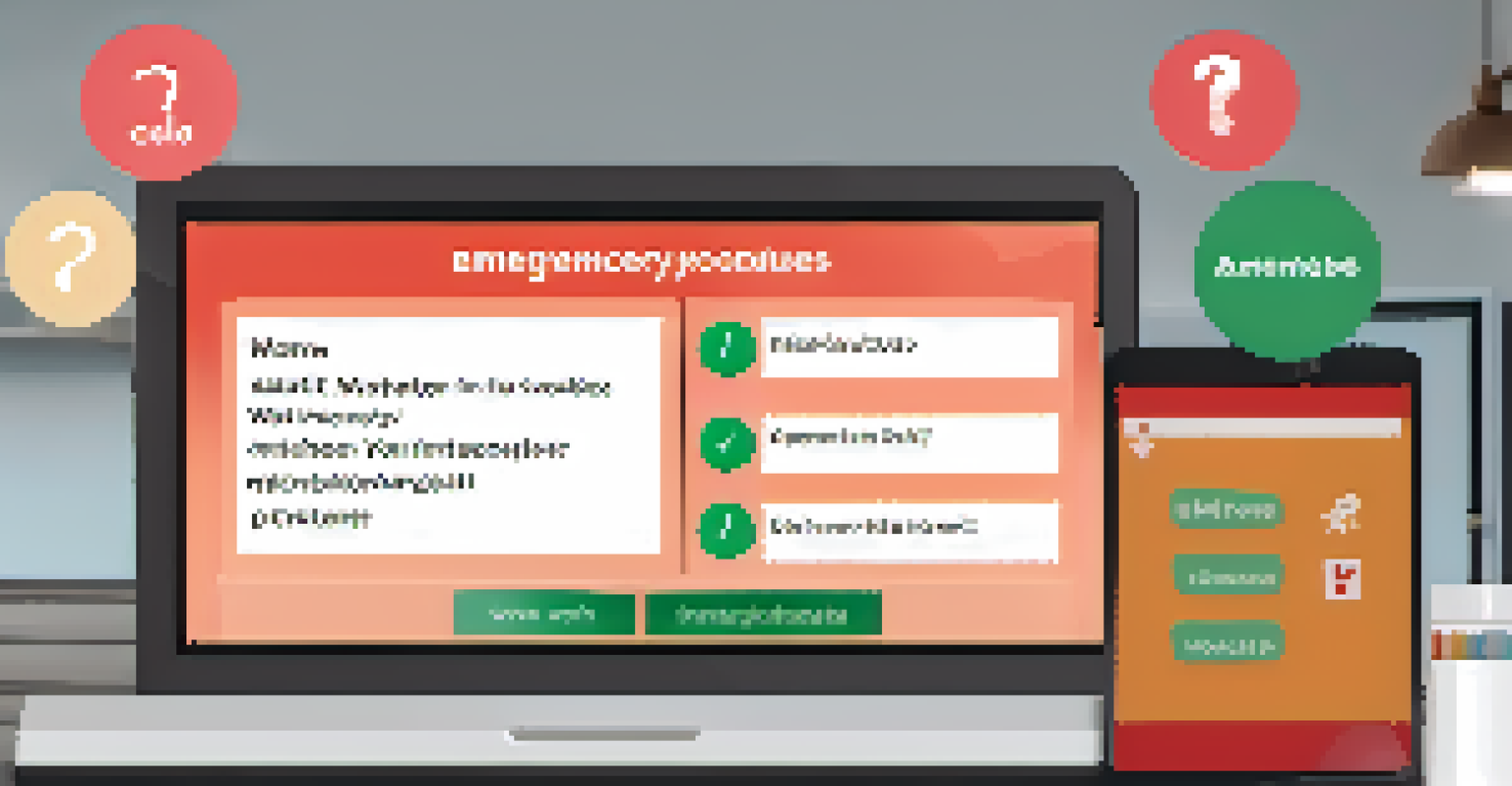Creating Microlearning for Health and Safety Training

Understanding Microlearning in Health and Safety Training
Microlearning is an educational approach that delivers content in small, digestible chunks. This method is particularly effective in health and safety training, where learners often need quick, actionable information. Think of it like snacking instead of a full-course meal; just as snacks keep your energy steady, microlearning helps keep knowledge fresh.
Learning is not the product of teaching. Learning is the product of the activity of learners.
In the context of health and safety, microlearning can cover topics such as emergency procedures, PPE usage, and hazard recognition. By breaking these subjects into bite-sized lessons, employees can easily recall important information when it matters most. This not only enhances retention but also improves workplace safety.
Moreover, microlearning can be delivered through various formats, including videos, quizzes, and interactive modules. This diversity keeps learners engaged and can cater to different learning styles, making it a versatile tool for any training program.
Identifying Key Topics for Microlearning Modules
To create effective microlearning modules, start by identifying the key topics that need to be addressed in health and safety. These could range from fire safety protocols to proper lifting techniques. Prioritizing these topics ensures that the most critical information is covered first.

Consider conducting a needs assessment or survey among employees to pinpoint areas where they feel they need more training. This collaborative approach helps in tailoring the microlearning content to the actual needs of the workforce. After all, who better to inform training than the people on the ground?
Microlearning Enhances Retention
Using bite-sized lessons improves knowledge retention, making it easier for employees to recall important safety information.
Once key topics are identified, break them down into specific learning objectives. Each module should focus on a single concept or skill, making it easier for learners to absorb and apply the information effectively.
Designing Engaging Microlearning Content
When designing microlearning content, engagement is key. Use visuals, such as infographics and videos, to enhance understanding and retention. A well-placed image or an engaging video can often convey a message much more effectively than text alone.
The only thing worse than training your employees and having them leave is not training them and having them stay.
Interactive elements, like quizzes or scenario-based activities, can also make learning more dynamic. For instance, presenting a real-world scenario and asking learners to choose the best course of action can deepen their understanding and reinforce critical thinking skills.
Lastly, keep the language simple and direct. Avoid jargon unless absolutely necessary, and if you must use technical terms, provide clear explanations. Remember, the goal is to make learning accessible to everyone, regardless of their background.
Choosing the Right Technology for Microlearning
Selecting the right technology is crucial for delivering effective microlearning. Learning Management Systems (LMS), mobile apps, or even social media platforms can serve as effective delivery channels. The choice largely depends on your audience's preferences and your organizational goals.
For instance, if your employees are often on the move, mobile-friendly content might be the best option. Conversely, if they're primarily office-based, a robust LMS could provide a comprehensive learning experience with tracking capabilities.
Key Topics Drive Effective Training
Identifying critical health and safety topics ensures that microlearning modules address the most relevant information for employees.
It's also important to ensure that the technology is user-friendly. Complicated platforms can deter employees from engaging with the material. A smooth user experience encourages learners to return and absorb more content over time.
Implementing Microlearning in Your Training Program
After designing your microlearning content and selecting the appropriate technology, it's time to implement it into your training program. Start with a pilot session to gauge employee response and gather feedback. This initial launch can help identify any areas for improvement before a full rollout.
Encourage managers and team leaders to promote the microlearning modules. Their support can increase participation and demonstrate to employees the importance of ongoing education in health and safety.
Lastly, be prepared to iterate. Use feedback to refine your modules continuously. Learning is an evolving process, and adapting your content based on learner input will help ensure it remains relevant and effective.
Measuring Effectiveness of Microlearning Initiatives
To truly understand the impact of your microlearning initiatives, it's essential to measure their effectiveness. This can be done through assessments, quizzes, and feedback forms. Regularly evaluating learner performance provides insights into which areas are working well and which may need adjustment.
Consider leveraging analytics from your chosen technology platform. Many LMS and mobile applications offer built-in analytics that track user engagement and completion rates. This data can help you identify trends and areas where learners may be struggling.
Engagement is Crucial in Learning
Incorporating visuals and interactive elements in microlearning content keeps learners engaged and reinforces their understanding.
Additionally, encourage open dialogue with employees about their learning experiences. Their perspectives can reveal valuable insights into how well the microlearning modules are meeting their needs and expectations.
Future Trends in Microlearning for Safety Training
As we look ahead, several trends are shaping the future of microlearning in health and safety training. One significant trend is the increasing use of artificial intelligence (AI) to personalize learning experiences. AI can analyze learner behavior and tailor content to fit individual needs, enhancing engagement and retention.
Another trend is the integration of augmented reality (AR) and virtual reality (VR) into microlearning. These technologies can simulate real-world scenarios, allowing employees to practice skills in a safe environment. Imagine a firefighter training in a virtual burning building; this immersive experience can lead to better preparedness in real situations.

Finally, keeping content updated is crucial. With regulations and best practices in constant flux, having a system for regularly refreshing your microlearning materials will ensure that your training remains relevant and effective.